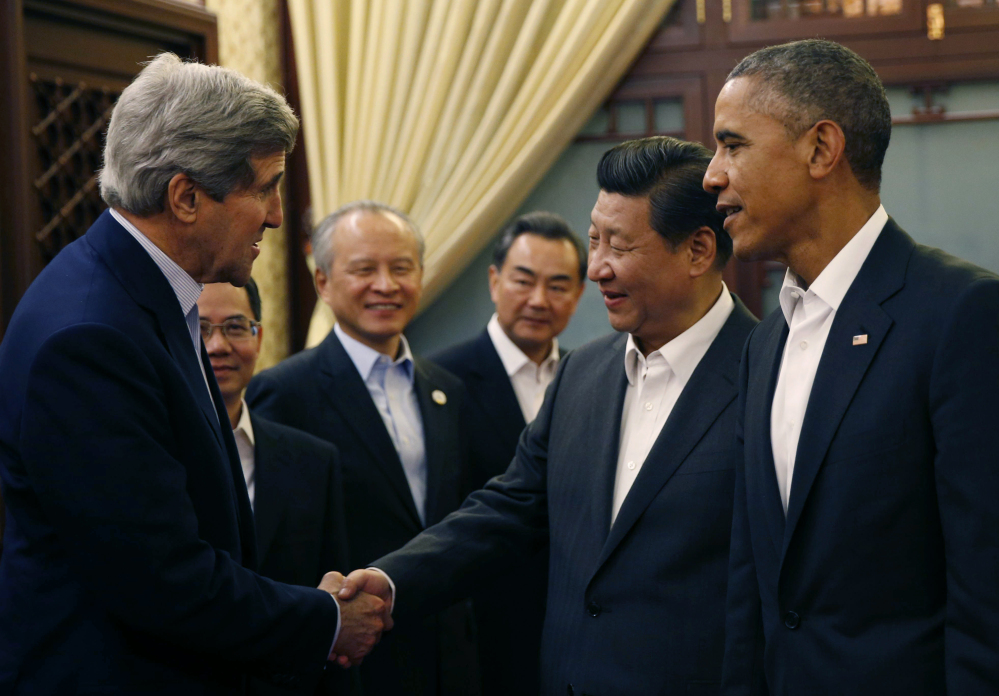BEIJING — The United States and China unveiled ambitious targets Wednesday to reduce greenhouse gases, aiming to inject fresh momentum into the global fight against climate change ahead of a make-or-break treaty to be finalized next year.
President Obama announced that the U.S. would move much faster in cutting pollution, with a goal to reduce by 26 percent to 28 percent by 2025, compared with 2005 levels. Obama previously set a goal to cut emissions by 17 percent by 2020.
Chinese President Xi Jinping, whose country’s emissions are still growing as it builds new coal plants, didn’t commit to cut emissions by a specific amount. Rather, he set a target for China’s emission to peak by 2030, or earlier if possible. He also pledged to increase the share of energy that China will derive from sources other than fossil fuels.
The unexpected breakthrough by the world’s two largest polluters reflected both nations’ desire to display a united front on climate change, blunting arguments from developing countries that have balked at demands that they get serious about cutting emissions. Yet it was unclear how feasible it would be for either country to meet their goals, and Obama’s pledge was sure to confront tough opposition from ascendant Republicans in Congress.
“This is, in my view, the most important bilateral climate announcement ever,” said David Sandalow, formerly a top environmental official at the White House and the Energy Department. “It sends the signal the two largest emitters in the world are working together to address this problem.”
On Tuesday, leaders of Asia-Pacific economies also agreed to begin work toward possible adoption of a Chinese-backed free-trade pact, giving Beijing a victory in its push for a bigger role in managing global commerce.
In a joint statement after a two-day Asia-Pacific Economic Cooperation summit, the leaders including Obama and Russia’s Vladimir Putin agreed to take a first step by launching a two-year study of the initiative.
“This is a historic step in the direction of an Asia-Pacific free trade area,” said Chinese President Xi Jinping.
China is promoting the proposed Free-Trade Area of the Asia Pacific despite U.S. pressure to wrap up other trade negotiations. Analysts see it as a response to a U.S.-led initiative, the Trans-Pacific Partnership, which includes 12 countries but excludes China..
Beijing has launched a series of trade and finance initiatives in pursuit of a bigger role in U.S.-dominated economic and security organizations to reflect Beijing’s status as the world’s second-biggest economy.
China says its motives are benign, but its growing economic weight could erode U.S. influence in the Asia-Pacific region.
Send questions/comments to the editors.



Success. Please wait for the page to reload. If the page does not reload within 5 seconds, please refresh the page.
Enter your email and password to access comments.
Hi, to comment on stories you must . This profile is in addition to your subscription and website login.
Already have a commenting profile? .
Invalid username/password.
Please check your email to confirm and complete your registration.
Only subscribers are eligible to post comments. Please subscribe or login first for digital access. Here’s why.
Use the form below to reset your password. When you've submitted your account email, we will send an email with a reset code.